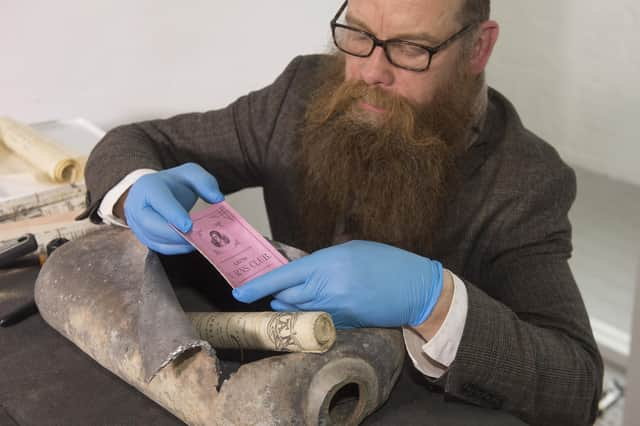Amateur archaeologists invited on Leith trams dig to help identify finds


Experts from Edinburgh City Council are recruiting volunteers to take part in the excavation on Constitution Street as part of the tram extension to Newhaven construction.
Those taking part will be able to get some hands-on experience helping to wash and identify finds made on site.
Advertisement
Hide AdAdvertisement
Hide AdTransport and Environment Convener Councillor Lesley Macinnes: “This is a huge project for the local area, both in terms of the benefits it will deliver but also the impact construction works will have.
“That’s why we want to involve the community every step of the way.
“This is a fantastic opportunity for people who live here to get their hands on a piece of the area’s history, and for a rare glimpse into the expert work of our archaeological team.
“I’d encourage local residents to register their interest and come along for the dig.”
The finds...
Advertisement
Hide AdAdvertisement
Hide AdFinds casting a light on bygone eras so far include clay pipes from the 17th century, pottery and animal bones.
Volunteers will learn about archaeological finds and what it takes to expertly clean up and properly record these pieces of history.
A time capsule discovered in Leith in December contained relics from the 19th century and offered a glimpse into locals’ love of the national bard, on the eve of Burns Night.
The cache of mementos was unearthed by contractors working on the tram line extension when the Robert Burns statue on Baltic Street was temporarily removed to make way for construction.
Advertisement
Hide AdAdvertisement
Hide AdConservators and archaeologists excavating the site found the time capsule beneath a lead sheet in a purpose-carved space in the plinth underneath the statue.
Historians believe it was placed there when the statue was erected in 1898, with contents including newspapers, coins and a pamphlet including information on crimes.
Last summer council bosses sought court permission to exhume up to 200 bodies from medieval graves in Leith as part of the tram extension project.
Human remains dating from medieval times were unearthed by archaeologists near South Leith Parish Church in 2009.
Spaces on the dig are limited and priority will be given to residents living within the local area.
To register your interest, email: [email protected]